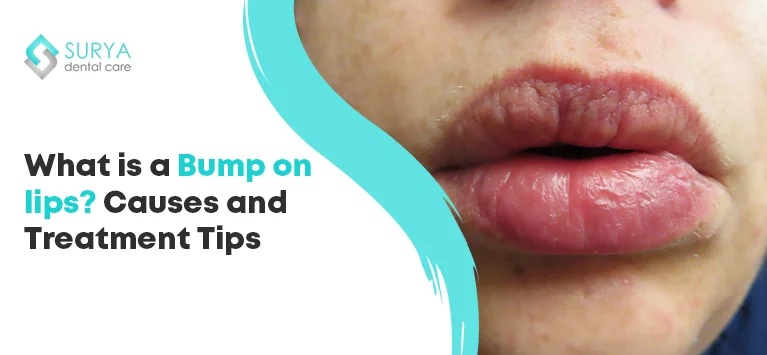Human papillomavirus (HPV) is commonly associated with skin growths, but many are surprised to find that it can also affect the tongue and oral cavity. While oral HPV infections often clear up on their own. However, persistent infections can lead to the growth of bumps on the tongue, specifically on the back of the tongue, tonsils, or the roof of the mouth.
This blog discusses HPV bumps on the tongue, how HPV spreads to the tongue, what causes the bumps to appear, and how they can affect overall health.
How Does HPV Spread to the Tongue?
HPV primarily spreads through skin-to-skin contact and mucosal surfaces. Most often, it spreads through sexual contact. Here, we have mentioned the most common way through which HPV spreads to your tongue.
- HPV can infect the mouth through oral sex with someone who has genital HPV, which can lead to HPV bumps on the tongue or other areas of the oral cavity.
- This viral transmission may occur from intimate contact or even indirectly through items that come into contact with infected areas.
What Causes HPV Bumps to Grow on the Back of Your Tongue?
HPV bumps are essentially small, wart-like growths caused by certain strains of the virus. They might look like white, flesh-colored, or red growths and are often painless, although they can sometimes cause discomfort or soreness, especially when located at the back of the tongue.
The growth of HPV bumps or HPV-related warts on soft tissues is triggered by some factors like
- weakened immune system
- Stress
- prolonged exposure to the virus
Types of HPV That Cause Bumps on the Tongue
HPV (Human Papillomavirus) includes over 100 strains, but only a few are known to cause bumps or warts in the mouth and specifically on the tongue. Each strain of HPV affects different areas of the body, and certain strains are more likely to cause oral symptoms. Here’s a breakdown of the main types of HPV that can lead to bumps on the tongue
- HPV-6 and HPV-11 (oral papillomas)
- HPV-13 and HPV-32 (focal epithelial hyperplasia (FEH))
- HPV-16 and HPV-18 (High Risk HPV)
- HPV-1 and HPV-2 (Known For Causing HPV warts on the skin)
HPV-6 and HPV-11
These are the most common low-risk HPV types associated with benign oral warts, known as oral papillomas. HPV-6 and HPV-11 typically cause small, soft, and painless bumps in the mouth, including on the tongue. These both are low-risk HPV because they rarely progress to cancer. Oral papillomas from these strains may appear singly or in clusters and often have a cauliflower-like appearance.
HPV-13 and HPV-32
Heck’s disease, also known as “focal epithelial hyperplasia,” is a condition that is linked to these both strains and benign oral developments. This condition causes multiple small, soft bumps on the mucosal surfaces of the mouth, including the tongue. Though uncommon, these growths tend to appear in clusters and are generally not painful or harmful. HPV-13 and HPV-32 bumps may affect individuals with specific genetic susceptibilities and often clear up on their own over time.
HPV-16 and HPV-18
While HPV-16 and HPV-18 are high-risk strains more commonly linked to cancers (such as cervical and throat cancers), they can also infect the mouth and cause bumps on the tongue. Though less common, bumps from these high-risk strains should be taken seriously, as they can sometimes lead to malignancies in the oral cavity if they persist and are left untreated. HPV-16 is especially notable for its association with oropharyngeal cancers, particularly in the back of the tongue and throat areas.
HPV-1 and HPV-2
HPV-1 and HPV-2 are primarily known for causing warts on the skin (such as common warts on hands and feet), but they can sometimes lead to oral warts if transferred to the mouth. While rare, these strains can cause small, firm, wart-like bumps that may appear on the tongue and other parts of the mouth, especially in individuals who may bite their nails or engage in habits that bring the virus from the hands to the oral area.
How Long Will it Take for an HPV Tongue Bumps to Go Away?
In many cases, HPV infections are temporary and clear up on their own as the immune system fights off the virus. Oral HPV bumps may disappear within a few months, although some may persist for longer, especially in people with weakened immune systems. For those with a robust immune response, the infection and its symptoms, including tongue bumps, can resolve within 1-2 years.
For persistent cases, treatments such as cryotherapy (freezing off the growths), laser therapy, or even minor surgery may be used to remove the bumps. Some individuals may also benefit from immune-boosting treatments to help clear the virus faster.
Can HPV Bumps Spread to Other Parts of the Body?
HPV can infect various parts of the body, but oral HPV tends to remain localized within the mouth. It is unlikely that HPV bumps on the tongue would spread to distant areas, such as the genital region, on their own. However, since HPV can spread through direct contact, there is a risk of transmitting the virus from one part of the body to another through self-inoculation (e.g., touching an HPV bump on the tongue and then touching other mucosal areas).
Since HPV transmission can occur through any intimate contact, individuals with oral HPV should take precautions to prevent spreading it to others, primarily through shared items or close contact. Practicing good hygiene, like avoiding touching bumps and washing hands regularly, can reduce the spread of the virus.
How to Prevent HPV from Spreading to the Mouth
While HPV is a common virus, there are steps you can take to lower your risk of developing HPV-related bumps on the tongue or in other areas of the body:
- HPV Vaccination: The HPV vaccine is highly effective at preventing infections from high-risk HPV types, including those that affect the oral cavity. Receiving the vaccine can significantly reduce your risk of developing HPV-related growths.
- Safe Practices: Avoiding direct contact with HPV-infected areas, practicing safe sex, and limiting the number of sexual partners can all reduce the likelihood of contracting or spreading HPV. Using protection during oral sexual activity can also help.
- Avoid Sharing Utensils or Personal Items: Since HPV can be spread through contact with infected surfaces, it’s best to avoid sharing items that come into contact with the mouth, such as utensils, toothbrushes, or towels.
- Routine Dental Check-Ups: Regular dental visits can aid in the early detection of unusual oral growths, allowing for prompt treatment if necessary. Dentists can check for abnormal tissue changes and refer patients to specialists for further evaluation if needed.
- Maintain Good Oral Hygiene: Practicing good oral hygiene can create a healthier environment in the mouth, making it less susceptible to infections.
Takeaway
While HPV bumps on the tongue can be concerning, they are often benign and clear up on their own. Taking preventive measures, such as getting vaccinated and practicing good hygiene, can reduce the risk of HPV infections in the mouth and help maintain overall oral health. However, if the bumps persist, grow, or cause discomfort, it’s wise to consult a dental professional for an accurate diagnosis and appropriate treatment.
FAQs
HPV is generally not dangerous but can lead to complications if left untreated. Certain strains of HPV are linked to oral cancers, making regular check-ups important for early detection. Most HPV infections resolve on their own; however, persistent lesions should be monitored by a healthcare professional for potential treatment options.
HPV in the mouth can manifest as small, wart-like growths, often flesh-colored or white. These lesions may be slightly raised and can vary in texture. While they are typically painless, they can cause discomfort if they irritate surrounding tissues. It's essential to seek medical evaluation if these bumps persist or change.
The back of the tongue generally appears as a textured surface covered with small bumps, which are the taste buds (papillae). These bumps can vary in size and color but are usually pink and relatively flat. In some cases, they may become enlarged or change color due to various factors, including irritation or infection.
The back of the tongue generally appears as a textured surface covered with small bumps, which are the taste buds (papillae). These bumps can vary in size and color but are usually pink and relatively flat. In some cases, they may become enlarged or change color due to various factors, including irritation or infection.









Leave a Comment